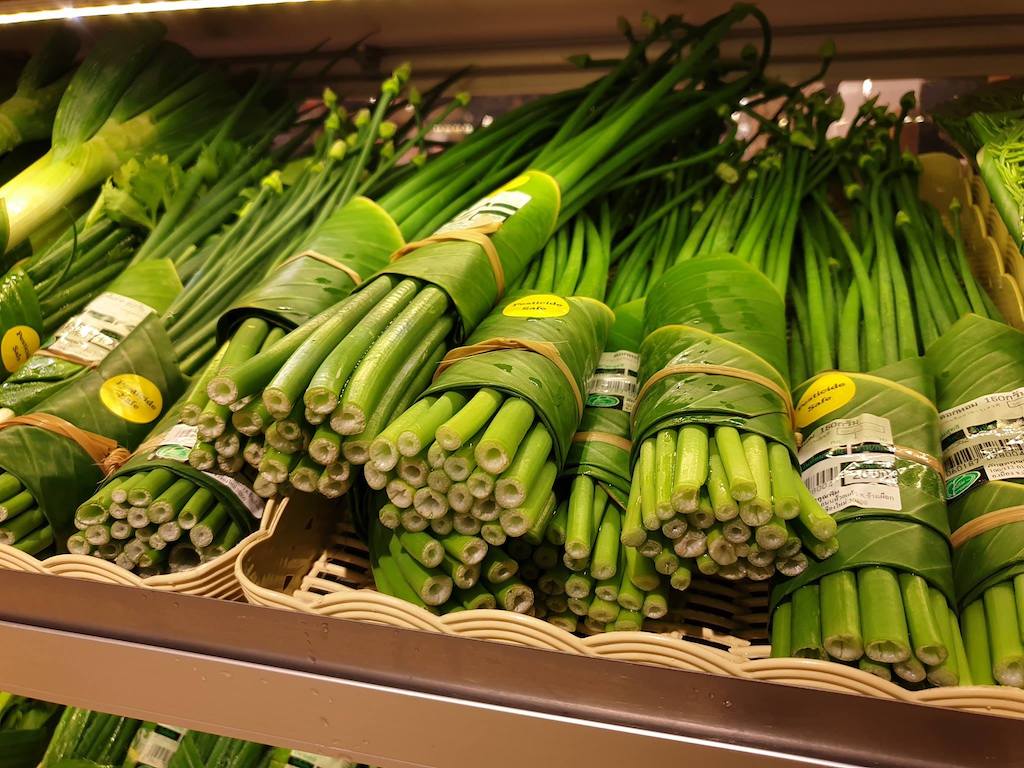2 Mins Read
A supermarket chain located in Chiang Mai, Thailand has come up with a new way to reduce single-use plastic waste. While most supermarkets sort their fresh fruit and vegetables with unnecessary plastic packaging, this grocery store has instead made use of banana leaves as an eco-friendly solution. Pictures of this banana leaf method have gone viral, with over 11,000 shares in less than two days.
From plastic wrappers, cling film and produce bags, supermarkets are one of the biggest culprits when it comes to producing waste from excessive packaging. Our convenience culture comes at a severe price. It has fuelled our current environmental crisis by exacerbating landfill shortages and plastic pollution in our oceans.
Despite recent moves targeting single-use plastics, such as the wave of plastic straw bans and taxes on plastic bags, plastic packaging is still pervasive. Legislative action to reduce plastics is offset by huge investments large fossil fuel companies have made in new facilities that produce plastic from petroleum. These facilities are predicted to increase global plastic production by over 40% within the next 10 years.
In addition, because widespread recycling outlets and programs for plastic packaging remain rare, much of this plastic waste ends up polluting our oceans. A 2014 report revealed that there is over 5 trillion pieces of plastic in the sea – and much of this debris are less than 5 millimetres. Microplastic is especially damaging because they can end up digestive systems of marine life, become dissolved in fresh water supplies and consumed by humans.
In the Southeast Asian region, visible plastic pollution on coastlines has also caused shutdowns of popular beach destinations. Last year, Thai authorities had to close down Maya Bay in Thailand, known for featuring in Leonardo DiCaprio’s The Beach, in order to clean up waste. The Philippines also had to temporarily close Borocay Island due to plastic pollution and other environmental concerns due to excessive tourism.
Banana leaves are abundant in Asia. Except for the need to collect them, they come at no cost. For centuries, they have been used as bowls, plates and wrappers and feature in many Asian cuisines. They feature as plates in some dishes served at Filipino and Indian restaurants, or are used to add special flavours in Vietnamese classics. Banana leaves are also purported to bring health benefits as its enzymes aid digestion when released into food.
There is no need to continue using excessive plastic packaging. Flexible, sturdy and waterproof, banana leaves might just be one of the solutions to confront the persistent use of plastic in our supermarkets and beyond.
Image courtesy of Perfect Homes Chiang Mai Facebook.




